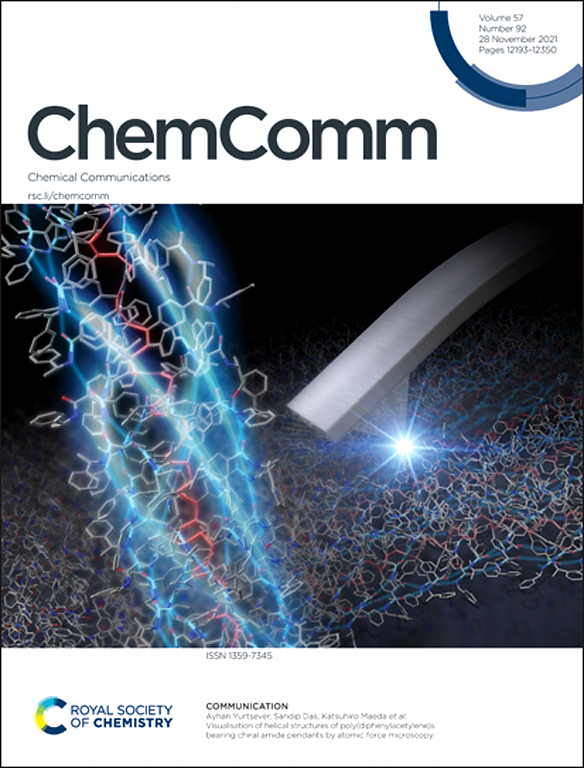具有5 '端悬垂的反平行g -四重结构主要在人类端粒ds-ss DNA连接处形成
IF 4.2
2区 化学
Q2 CHEMISTRY, MULTIDISCIPLINARY
引用次数: 0
摘要
人类端粒序列形成的g -四重体结构对序列的细微变化和局部环境高度敏感。虽然大多数结构研究都集中在包含四个不间断g束的序列上,但g束分裂的结构后果仍未被探索。在这里,我们提出了人类端粒序列的核磁共振溶液结构与第一个g -束分裂。该结构采用反平行拓扑结构,在5 '端有一个无序的GTT段。这种构象优先在生物相关的双链/单链DNA连接处形成。这些发现拓宽了我们对人类端粒g -四联体结构多样性的理解。本文章由计算机程序翻译,如有差异,请以英文原文为准。

An antiparallel G-quadruplex structure with a 5′-end overhang forms predominantly at the human telomeric ds–ss DNA junction
G-quadruplex structures formed by human telomeric sequences are highly sensitive to subtle sequence variations and local environment. While most structural studies have focused on sequences containing four uninterrupted G-tracts, the structural consequences of splitting a G-tract remain unexplored. Here, we present the NMR solution structure of a human telomeric sequence with the first G-tract split. The structure adopts an antiparallel topology with a disordered GTT segment at the 5′-end. This conformation is preferentially formed at a biologically relevant double-strand/single-strand DNA junction. These findings broaden our understanding of the structural diversity of human telomeric G-quadruplexes.
求助全文
通过发布文献求助,成功后即可免费获取论文全文。
去求助
来源期刊

Chemical Communications
化学-化学综合
CiteScore
8.60
自引率
4.10%
发文量
2705
审稿时长
1.4 months
期刊介绍:
ChemComm (Chemical Communications) is renowned as the fastest publisher of articles providing information on new avenues of research, drawn from all the world''s major areas of chemical research.
 求助内容:
求助内容: 应助结果提醒方式:
应助结果提醒方式:


